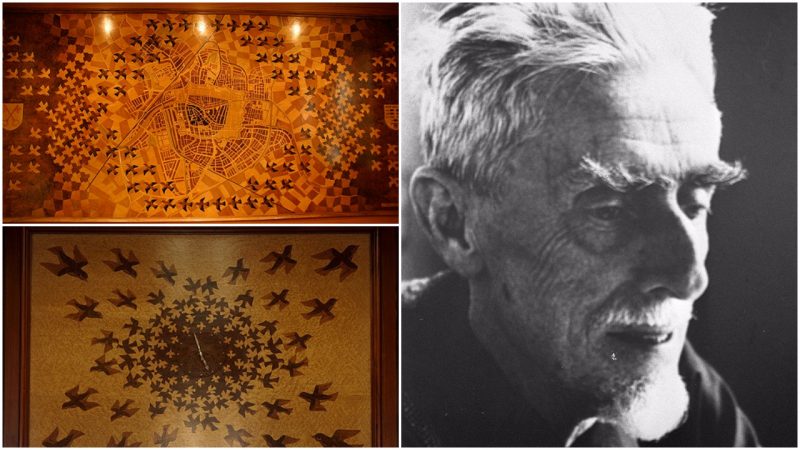Maurits Cornelis Escher is known for his incredibly detailed, mathematically inspired artworks that include woodcuts, lithographs, and mezzotints.
Early in his career, he drew inspiration from nature, making studies of insects, landscapes, and plants, parts of which he reused as details in his artworks. He later concentrated on complex optical illusions, mathematical objects, and operations including impossible objects as well as the exploration of infinity, perspective, symmetry, and reflection.
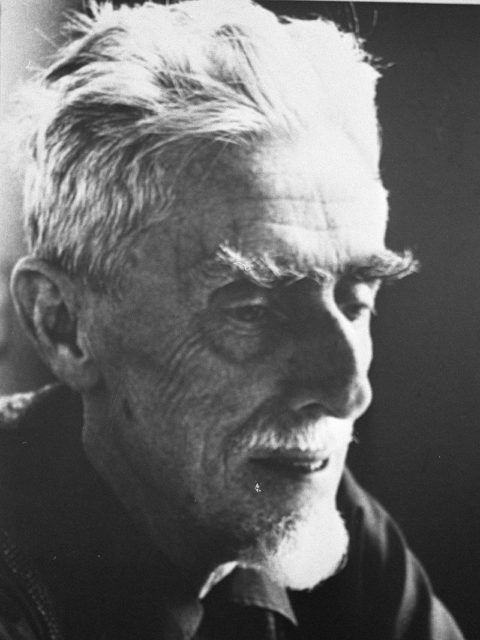
Nowadays Escher’s artworks are praised by fans and art critics alike, and their price on the market often reaches astronomical sums. While many of his works are scattered throughout museums all over the world, not many people are aware that the city of Leiden in his native country of the Netherlands hides five of his lesser-known works.
In the early 1940’s, the artist met the Dutch architect Henry Timo Zwiers, who was at the time designing the Leiden city hall. Escher’s work was deemed suitable for a public building, so Zwiers asked Escher to produce several works that were to be displayed in the building.
The collaboration resulted in five pieces made by Escher that can still be seen today. He produced two wall panels for the council chamber, a panel for the mayor’s office, a clock face, and some window etchings for the book cabinets in the clerk’s office.
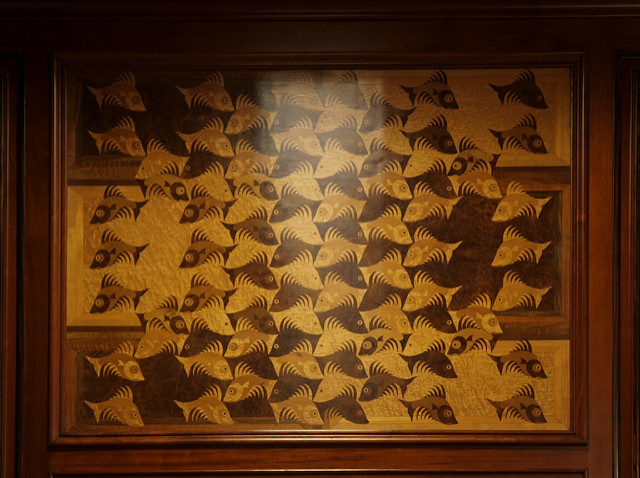
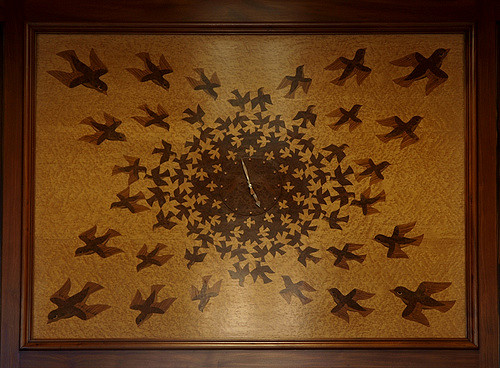
The wooden pieces were created through the inlay technique called “intarsia”, which is an elaborate form of wood inlaying that is similar to marquetry.
The practice dates back to the seventh century, and the historical works produced in this manner are known for featuring many complex layers of material. The pieces made for the Leiden city hall are similar to the rest of Escher’s work: they feature complex intertwining patterns, recurring motifs, and mathematical precision.
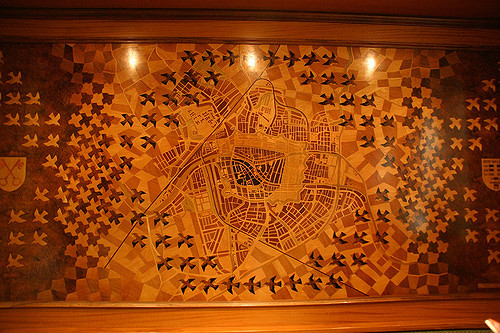
Escher’s work has always been highly praised throughout popular culture, and he designed many covers for books and music albums. The highbrow art culture somewhat neglected his work despite its universal acclaim, even in the Netherlands, where the first major retrospective exhibition was held when Escher was already 70 years old.
Here is another story from us: Gray’s Anatomy: A cult human anatomy textbook by Henry Gray
Today, many exhibitions of his work are held in cities across the world, but no city other than Leiden can boast about Escher’s work decorating its city hall.
